Reading time: 5 minutes
Since we dont have running or drinking water on our abandoned farm in Spain, building the rainwater harvesting system became our first project.
Rainwater harvesting is a sustainable water management solution for areas with limited access to water resources, like in our property.
We are planning to start this rainwater harvesting project using intermediate bulk containers or IBC Totes as our water storage tanks.
In this article, I will talk about the challenges and struggles of this first rainwater harvesting project.
What are IBC Totes?
IBC totes are 1000L tanks used for the storage or transportation of liquids or bulk materials.
There are two types of IBC totes: chemical-grade, used for chemicals, e.g., engine oil; food-grade, used for food products, e.g., olive oil;
For our water storage systems we chose the food grade IBC totes, so we can store drinking water.
Benefits of Using IBC Totes
Food-grade IBCs can store up to 1000 liters (275 gallons) of potable water. This makes them perfect for storing rainwater. Some of their benefits include:
Large Storage Capacity
One of the main advantages of IBC totes is their large storage capacity. If connected together, they can be used to store significant amounts of rainwater.
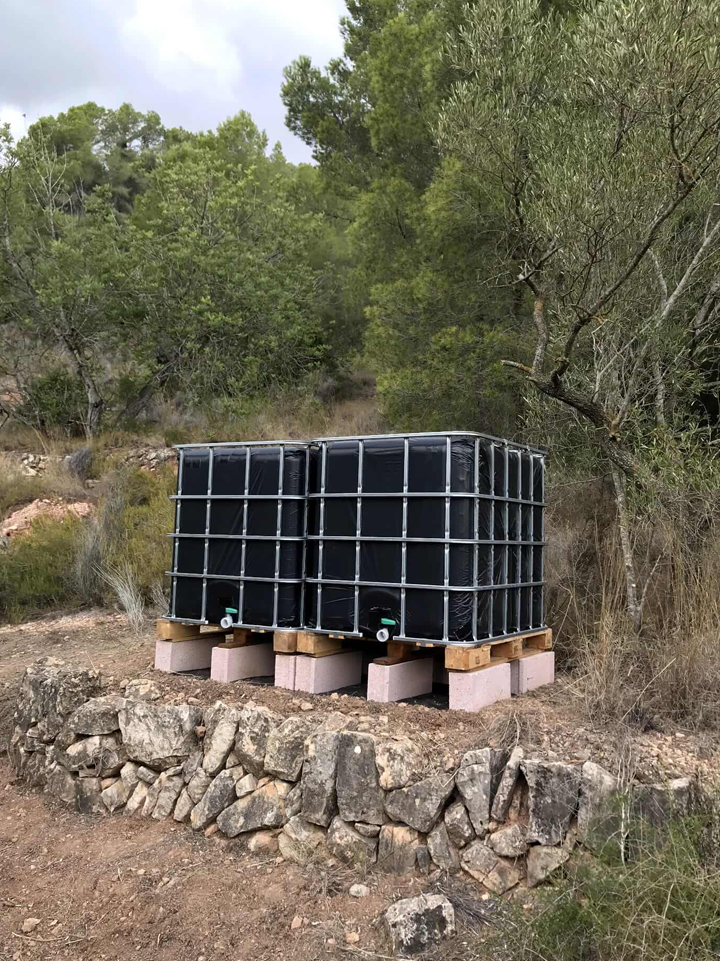
Durability
IBC totes are designed for industrial use, which means they are incredibly durable and can withstand harsh weather conditions. Including UV solar radiation.
Reusability
Our priority on this project is sustainability, and being able to reuse these IBC totes to store rainwater not only reduces our carbon footprint but also aligns us with the principles of permaculture.
Second-Hand IBC Totes
It had only been a few weeks since we bought our abandoned land in Spain. As we are doing the Eridu Life project DEBIT FREE, we are always looking for bargains.
After some research on Facebook marketplace, we discovered that second-hand IBCs are very cheap in Spain, costing us only 40 euros a piece. This makes the project very affordable.
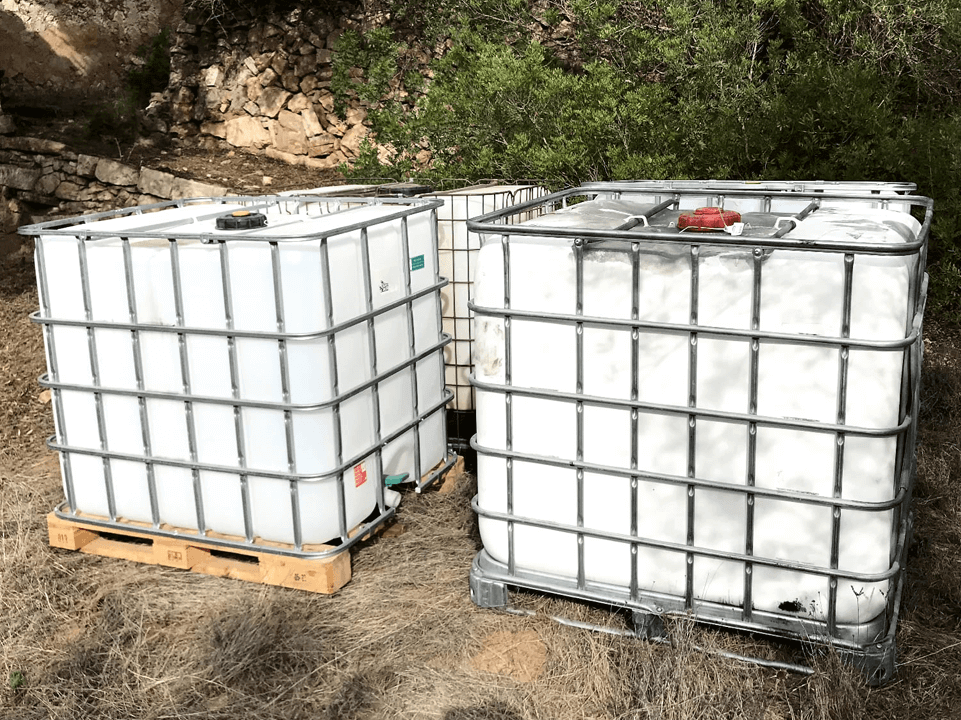
We decided to start this project with 4 sencond-hand IBC totes, and expand them later when needed.
While IBCs may have been cheap, Facebook Marketplace is a place full of opportunists. it didn’t take long until we encountered some scammers. so, be careful!
Dirty and Greasy
You know that saying: “This sounds too good to be true”. Well, this unfortunately happened to us.
Buying cheap second-hand IBCs was just the beginning of a bigger problem.
As soon as they arrived, we were faced with the reality of buying cheap things in Spain. They arrived dirty and greasy.
How do we wash and clean them?
What products should we use it?
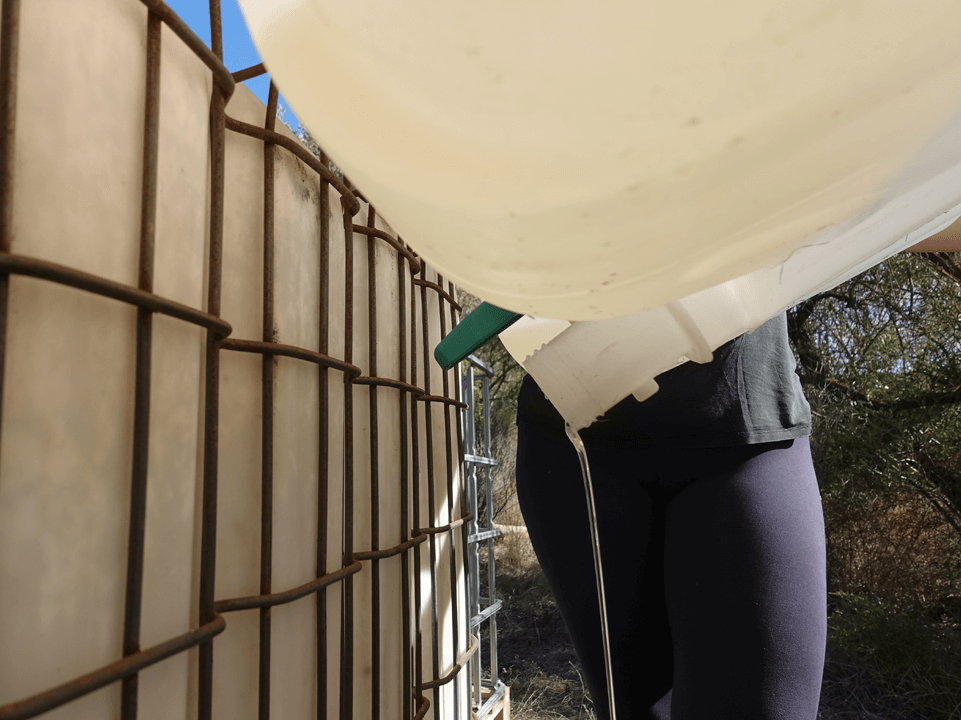
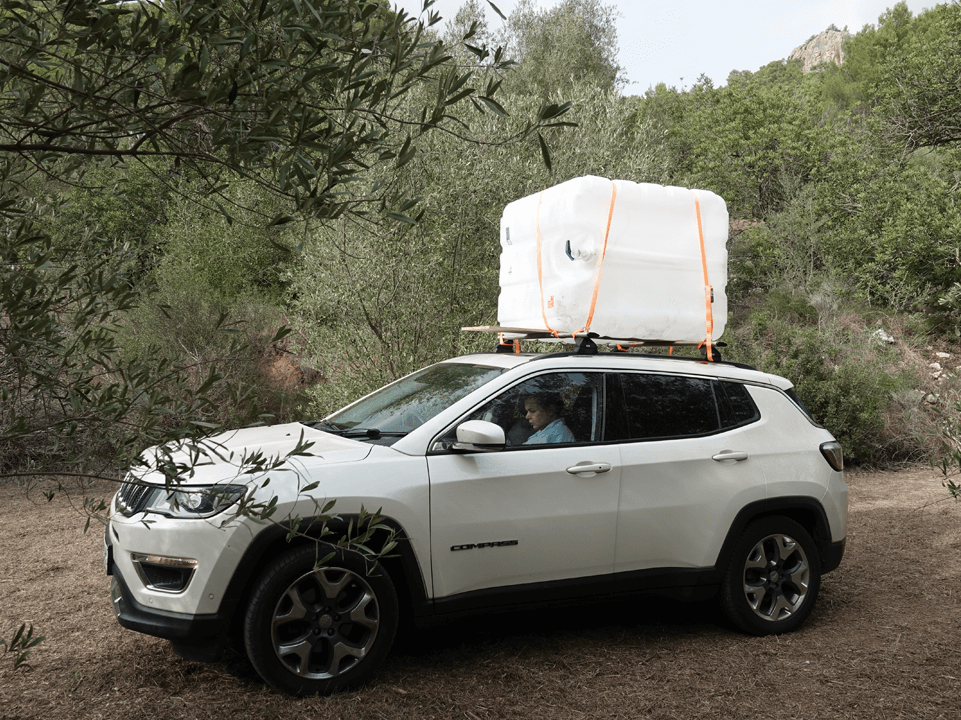
With no answers, I had to put the project on hold, go back to the apartment and do some research to find a feasible solution. I recorded a video showing how I did it.
Watch the video:
In the video above, you will see the difficulty of cleaning and washing IBC containers with the products we find with a minimum amount of water.
Finally, we managed to clean and wash some of the IBC containers. Now that we have cleaned them, we will prepare them to store water and eventually collect rainwater.
Our Rainwater Harvesting System
This rainwater harvesting system is a complex project. It requires several elements to be built and assembled together before it can be operational.
So, in order to have running or drinking water on our abandoned farm, we are planning to build this project in stages, or steps, if you will. Some of the elements that need to be built are:
IBC Totes: This is the first stage of the project. These food-grade IBC totes are large and durable tanks that will store the collected rainwater.
Platforms: This will be the next stage of the project. We will build some sturdy platforms that will hold the IBCs to be used as water storage tanks.
Roofs, Gutters & Filters: In the the future stage of the project. We will use the platforms as base for the rain catchment roof. This way we can collect rainwater.

By harnessing rainwater, we are taking a significant step towards independence and sustainable living, transforming our abandoned farm into an eco-friendly haven.
Driking Rainwater
If you plan to use the collected rainwater for drinking or cooking, like we do, the water will need to be treated to remove any potential contaminants.
This treatment can be done using various methods, including filtration, boiling, or chemical treatment.
There are a lot of resources available online, so do your research thoroughly before drinking or cooking with rainwater.
Conclusion
Using IBC totes for rainwater harvesting is a practical, affordable, and sustainable solution for water management.
With the right setup and maintenance, you can have a reliable source of water storage for your homestead needs.
Remember, it’s always important to check local regulations regarding rainwater harvesting before setting up your system.
That’s it for this article. Did you like it?
Leave your comment or suggestion below. I love responding to all comments and I always do it personally.
Talk to you soon 🙂
P.S. If you would like to help us build our dream home, you can do it here. Or if you would like to help us continue recording videos, you can do it here. Either way, your support is very much appreciated.

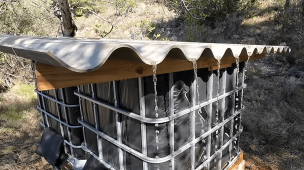
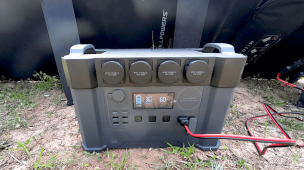
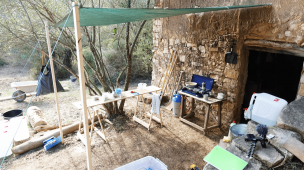
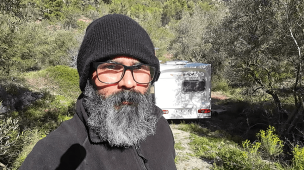
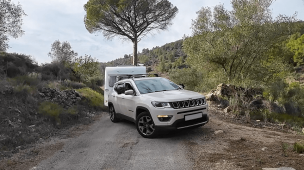

Permalink
Hello Ricardo. I saw your post on Reddit about the water system using IBC bags. I bought a piece of land in Wyoming. It’s an abandoned homestead and I’m thinking about using the same water tanks to collect rainwater.
Permalink
Hello Perry. If you can get it second hand and cheap then it’s perfect, otherwise it’s better to use one of those flexible cisterns. Good luck with your project
Permalink
I think IBC totes are very useful. And using them for this kind of water system projects is good. You’re doing great!
Permalink
Hello Peter. Appreciate your comment. Thank you for the visit 🙂
Permalink
Hi Ricardo. It’s amazing what you’re doing. Reusing these IBC totes to have running water on your Finca is a good thing. Keep up the good work!
Permalink
Hello Ameila. I like the idea of reusing things. It is within the principles of permaculture. Thank you for your comment!